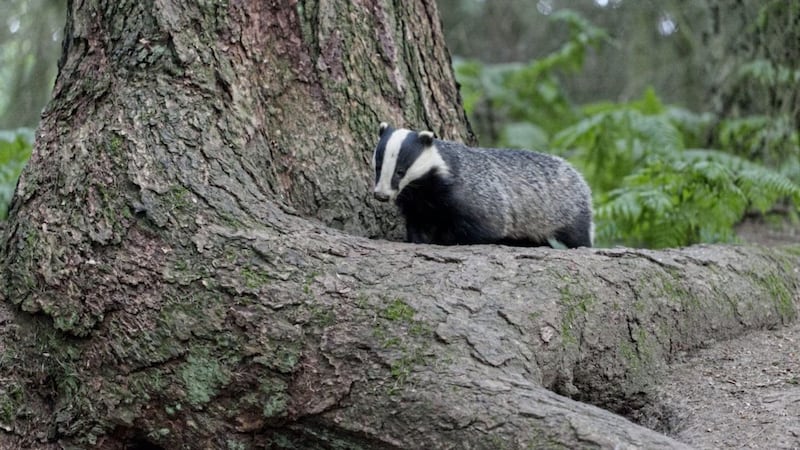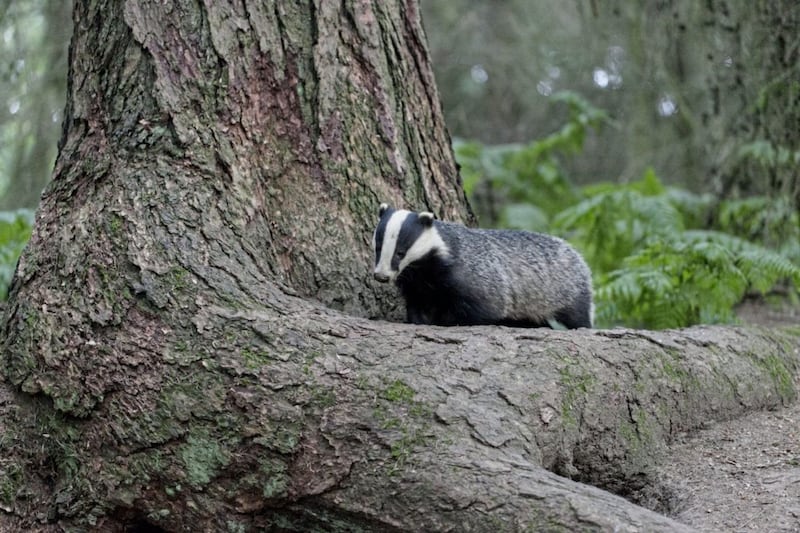SEEING a badger road kill recently reminded me that deep in the bowels of our countryside badger cubs will soon be born in their specially prepared birth chambers.
Meles meles is one of my favourite native mammals. Immortalised through characters from famous literary works like Mr Badger in Kenneth Grahame’s The Wind in the Willows and Trufflehunter in CS Lewis’s The Chronicles of Narnia, the badger is also the emblem for many conservation organisations including our own Ulster Wildlife Trust.
My appreciation of badgers and other wildlife came from time spent with an old friend, Joe Hughes, a local man, sadly no longer with us. Joe had an intimate, but unsentimental understanding and knowledge of the natural world and its ways. A true naturalist and countryman, he was an expert observer of the natural cycles around him. It was Joe who introduced me to the world of wild badgers, taking me from looking at their pictures in books, to watching them emerge from their setts on balmy summer nights.
Badgers are nocturnal and rarely seen alive by most people. The white head with black nose and two broad black stripes running from behind the muzzle to behind the ears give it its distinctive look. It has an overall grey appearance because the long guard hairs on its back and flanks have a white base and tip with a black band in the middle.
Stockily built with short, powerful legs, strong claws for digging and a small bushy tail, Badgers are omnivorous and opportunistic feeders, taking a variety of whatever foods are available. Earthworms form the largest part of their diet but they also eat beetles, slugs, frogs and small mammals such as rats, mice and hedgehogs as well as nuts and berries.
Many of their features and attributes are perfectly captured by one of our foremost contemporary poets, Michael Longley who in his poem Badger writes of how, with the ‘Night’s silence around his shoulder’, the badger, ‘Manages the earth with his paws’ along ‘His path straight and narrow/And not like the fox’s ziz-zags’.
When Carl Linnaeus wrote the first description of a Swedish badger specimen in 1758, he thought it was a species of small bear. Its scientific name uses the Latin for badger, meles, for both parts. There are a few explanations for the origin of the badger’s English name, one of which is that badger is derived from the 16th century word bageard, a reference to the striped face or ‘badge’ of the animal. Another suggests that badger is derived from the French word for digger ‘becheur’.
In Irish it is simply known as ‘broc’ like one of its old English names ‘brock’. Folklore links the animal with good luck and evil. It was said, 'A tuft of hair gotten from the head of a full grown brock is powerful enough to ward off all manner of witchcraft'. Another long-standing rhyme says: 'Should one hear a badger call/And then an ullot (owl) cry/Make thy peace with God, good soul/For thou shall shortly die'.
Although the badger has been persecuted for centuries and continues to divide opinion in relation to its role in the spreading of TB in cattle, it is a most resilient animal with distant links stretching back to our Neolithic ancestors, something Longley also alludes to in his poem with the lines;
Pushing the wedge of his body
Between cromlech and stone circle,
He excavates down mine shafts
And back into the depths of the hill
Thanks Joe for introducing me to these magnificent animals and for much more.



